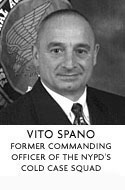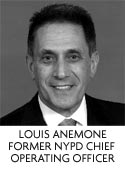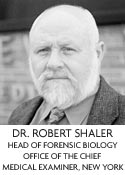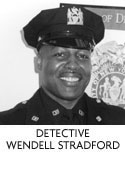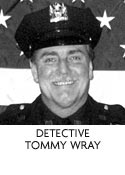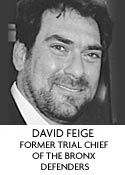Louis R. Anemone
A 35 year veteran of the New York Police Department–for the last five years of his tenure he was the Chief Operating Officer, the highest sworn officer rank in the department. Anemone was one of the co-developers of Compstat. During his tenure with the NYPD, homicides were reduced 60 percent, violent crime by 50 percent, and police use of deadly force by 60%. In 1996, Compstat received national recognition as a recipient of the Ford Foundation and Harvard’s Kennedy School of Government award for Innovations in American Government. Amemone also played a key role in the 1995 merger of the New York Housing Police Department and the New York City Transit Police Department into the New York Police Department. In 1996, Anemone made sure the Cold Case Squad was successfully put into place with some of the best detectives from the now newly merged police departments.
Anemone now has his own law enforcement and counter-terrorism consulting company, Anemone Consulting, Inc., which in addition to providing law enforcement consulting services, is developing software which will accomplish worldwide some of the things that Compstat did for New York City. He lectures around the country about domestic security, most recently at a conference at Northeastern University, which was jointly sponsored by The Police Institute at Rutgers University, Boston Police Department and Massachusetts’ Public Safety Department.
Andrea Coleman, M.D.
Andrea Coleman graduated from Vassar in 1989 with a bachelor’s degree in studio art. She worked as a freelance artist and graphic designer in New York City for several years before deciding upon medicine as a career. During her premedical studies at Columbia University, she did DNA research in the Forensic Biology laboratory at the office of Chief Medical Examiner of NYC before attending medical school at the State University of NY in Brooklyn. After receiving her medical degree in 2002, she went on to train in general pathology at Manhattan’s Mount Sinai Hospital. She is currently a fellow in Forensic Pathology at the Office of Chief Medical Examiner in NYC.
David Feige
David Feige is here for counterpoint. A life-long public defender and writer, David was the Trial Chief of The Bronx Defenders, an innovative public defender office in the South Bronx. David is an award-winning trial lawyer, and a nationally known lecturer on trial skills and eyewitness identification issues. He is on the faculty of the National Criminal Defense College, and has taught trial skills for the National Institute for Trial Advocacy, and at law schools and public defender offices around the country.
David’s writings on the criminal justice system have been published in places as diverse as Slate, Legal Affairs, The New York Times Magazine, and The Los Angeles Times Magazine, and his commentaries on criminal justice issues can be heard on National Public Radio and it’s New York affiliate WNYC. In 2004 he was awarded a Soros Media Justice Fellowship. He is a frequent commentator on Court TV and his book, Indefensible, was published by Little, Brown & Co. in 2006.
Robert Shaler
Dr. Shaler recently retired from his position as the Head of Forensic Biology at the Office of the Chief Medical Examiner in New York. His book, Who They Were: Inside the World Trade Center DNA Story, The Unprecedented Effort to Identify the Missing (Free Press) was published in 2005.
Vito Spano
Retired Deputy Inspector Vito Spano has a long NYPD history of bossing people around. In eighteen years he’s been in command of the Brooklyn Special Victims Squad, the Queens 105 Detective Squad, the Queens Robbery Squad and Queens Special Victims Squad, he was the Executive Officer of the Midtown South Precinct, then a Commanding Officer in the Internal Affairs Bureau, then Executive Officer of Brooklyn’s 83 Precinct, and following that, Detective Investigative Coordinator for Brooklyn North, Detective and Narcotic Operations, and commander of the Brooklyn Gang Squad.
Vito Spano first joined the NYPD in 1982. In August 2001, Spano was assigned as Commanding Officer of the Cold Case Squad, and in November 2001, he was promoted to Deputy Inspector (that’s one rank above captain).
During eighteen years of management and supervisory positions with the New York City Police Department, Spano was involved in the reduction of gang-related violence, overall violent crime in New York City, corruption investigations among Police Officers, and he was instrumental in the implementation of innovative practices in handling Special Category Crime Victims (Abused Children, Sexual Assault Victims, Elderly Victims).
Spano now works at the Office of New York State Attorney General under Eliot Spitzer, as the Chief Investigator for Medicaid Fraud Control Unit, and lectures to law enforcement on a variety of subjects including serial murderers, and child abduction.
Wendell Stradford
1st Grade Detective Wendell Stradford is one of the original members of the Cold Case Squad. Before coming to Cold Case he worked for Jack Maple, the Deputy Commissioner of Operations, in a special unit called the Police Commissioner’s Investigation Squad, the PC Squad for short. If a precinct was having problems, someone from the PC Squad was sent to help. They were the Cavalry. His other assignments include: Central Robbery, Special Investigations, the Street Crime Unit, and the Warrants Squad.
Wendell Stradford has tracked down and arrested a lot of bad guys. Since 1985, he has made 328 arrests, 23 of them while in Cold Case. He brought in another 74 suspects of murder or attempted murder in cases opened by other detectives who were unable to do so themselves.
Among his many commendations, Stradford received the Combat Cross in 1993 for a shooting, and later a Distinguished Duty commendation for apprehending a robbery suspect while getting stabbed in the process. He has a degree in Criminal Justice, and has taken classes in sex crimes, pick pocketing, an FBI Academy class in Urban Survival, and he attended Homicide School at John Jay.
Thomas Wray
Retired Detective Tommy Wray was promoted to 1st Grade Detective on Christmas Eve, 2001, twenty-seven years after he first joined the force and the same year he took over the Christine Diefenbach case that is written about in The Restless Sleep.
Before that, Tommy Wray spent 12 years, from 1979 to 1990, in the 9th precinct in the East Village, a tough precinct at the time. Tiny brown crack vials used to pile up on the curbs and in doorways. “There were probably more drugs being sold in that precinct than anywhere else in the United States,” he remembers.
He was only in uniform for a year before he went into the Anti-Crime Unit. From there he went into RIP (Robbery Identification Program), then Missing Persons, then to the detective squad, then to Manhattan North Homicide in 1990. Wray received a Commendation for arresting the most wanted man in Puerto Rico. In 1992 he was transferred to Queen’s Homicide, where he met Phil Panzarella, who was the commanding officer at the time. Lt. Panzarella, who was taking command of the Queens division of the Cold Case Squad, asked Wray to join them in 1996, the year it was formed.





